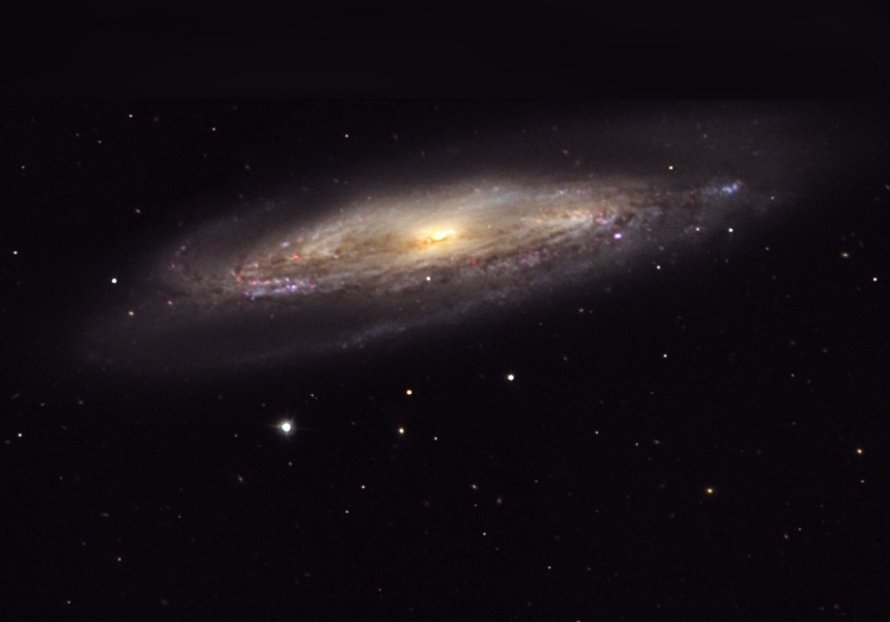M98 (NGC 4192)
Messier 98 (NGC 4192) is a spiral galaxy located in the constellation Coma Berenices in the Virgo Cluster of galaxies. M98 is 44400000 light years away from Earth.
M98 is best viewed during late spring, is magnitude 11, and can be viewed with small telescope. M98 is 9.8' x 2.8' in apparent size. For reference, the full moon is 30'.
Observing difficulty: Hard
- Name:
- Type:
- spiral galaxy
- Constellation:
- Coma Berenices
- NGC or IC:
- NGC 4192
- Magnitude:
- 11
- Viewing:
- small telescope
- Size:
- 9.8' x 2.8'
- Distance (light years):
- 44400000 LY
- RA:
- 12h 13.9m
- Dec:
- 14 55'
- Season:
- late spring
- Galaxy group:
- Virgo Cluster
- Messier Marathon #:
- 49
* The naked eye can see up to magnitude ~7-8 objects under ideal dark sky conditions.
Delving into the Coma Berenices Galaxy
Messier 98 (M98), also known as NGC 4192, is an intermediate spiral galaxy found in the constellation Coma Berenices. It was discovered by Pierre M?chain in 1781 and later catalogued by Charles Messier. M98 is one of the more than 1,000 galaxies that form part of the Virgo Cluster, a massive galaxy cluster in the Virgo constellation.
Physical Characteristics of Messier 98
M98 is an intermediate spiral galaxy, a classification that indicates it has features of both a spiral and a lenticular galaxy. Its spiral arms are not as defined as in classic spiral galaxies, but they are more pronounced than those found in lenticular galaxies. The galaxy is seen almost edge-on from our perspective, which gives it an elongated appearance.
The galaxy extends over 9.8 by 2.8 arc minutes, covering an actual area of approximately 160,000 light-years. It is characterised by a relatively high surface brightness and a luminous, elongated central region.
Magnitude and Distance
Messier 98 is approximately 44 million light-years away from our Milky Way Galaxy. It has an apparent magnitude of around 10.1, meaning it's a faint object in the night sky and isn't visible to the naked eye. However, it can be observed under ideal conditions using a small telescope or good binoculars.
Finding and Observing Messier 98
Messier 98 is located in the constellation Coma Berenices, which is best visible in the night sky during spring in the Northern Hemisphere. One way to find M98 is to locate the star 6 Comae Berenices, which lies to the east-northeast of the famous Leo Trio of galaxies (M65, M66, and NGC 3628). M98 is about 6 degrees to the east of this star.
While M98 is not observable with the naked eye due to its faint magnitude, it can be viewed through small telescopes under dark skies. In such telescopes, M98 appears as a thin, elongated patch of light. Larger telescopes will reveal more detail, including the brighter central region of the galaxy. However, its full detail can only be appreciated through long-exposure photography or very large telescopes.
The observation of M98 and other members of the Virgo Cluster provides an invaluable glimpse into the vastness of the cosmos and the variety of galaxies that inhabit it. These observations help astronomers study the formation and evolution of galaxies, and the structure and dynamics of the universe on a larger scale.



